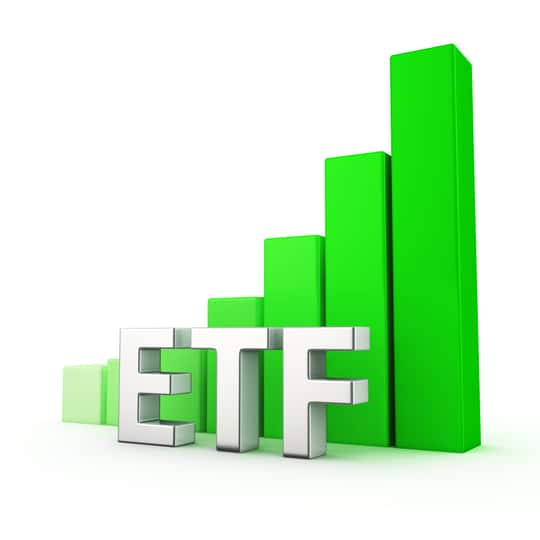Policymakers in emerging markets have established ambitious goals for the next decade, emphasizing economic diversification, infrastructure development, and skills advancement. By 2035, these markets are poised to significantly influence the global economy, contributing approximately 65% of global economic growth.
Considering this trajectory, investing in fundamentally stable exchange-traded funds (ETFs) that provide exposure to emerging markets could be wise. Notable ETFs include Vanguard FTSE Emerging Markets ETF (VWO - Get Rating), iShares MSCI Emerging Markets ETF (EEM - Get Rating), and Schwab Emerging Markets Equity ETF (SCHE - Get Rating).
Large emerging markets are anticipated to play an increasingly vital role in driving global economic growth, propelled by demographic shifts and a burgeoning consumer class. Additionally, many smaller nations are forecasted to experience economic growth at double the global average over the next five years, fueled by abundant natural resource deposits and other favorable conditions.
For instance, Guyana, South America’s third-smallest nation by land area, is projected to be the world’s fastest-growing economy from now until 2029. The rapid growth stems from a significant discovery of oil deposits in 2015 by ExxonMobil, which has propelled the country’s economy to quadruple in size over the past five years.
In Asia, Bangladesh, where 85% of exports come from the textiles industry, is expected to see the strongest growth. India, ranking eighth overall, is projected to achieve a 6.5% CAGR in real GDP through 2029. Favorable population trends, increased public investment, and robust consumer demand would drive this growth.
Looking ahead, economists at S&P Global Ratings expect the Federal Reserve to continue easing monetary policy in the coming quarters, projecting a benchmark interest rate of 3.00% to 3.25% by the end of 2025. Lower U.S. interest rates typically encourage capital flows to higher-yielding assets, such as those found in emerging markets.
As these markets experience stronger economic growth, they would attract further capital inflows as investors seek capital appreciation alongside higher interest rate returns. Given these promising trends, emerging market-focused ETFs present a compelling investment opportunity.
Now, let us examine the fundamentals of three ETFs that could offer exposure to emerging markets in 2024, starting with #3
ETF #3: Vanguard FTSE Emerging Markets ETF (VWO - Get Rating)
Launched and managed by The Vanguard Group, Inc., VWO targets public equity markets in emerging regions worldwide. The fund focuses on a diverse range of companies across various sectors. Utilizing representative sampling, it aims to track the performance of the FTSE Emerging Markets All Cap China A Inclusion Index.
With $83.70 billion in assets under management (AUM), VWO’s top holdings include Taiwan Semiconductor Manufacturing Company Limited (TSM) with a 7.73% weighting, followed by the U.S. Dollar at 3.76% weighting and Tencent Holdings Limited (TCEHY) at 3.68%.
VWO has an expense ratio of 0.08%, lower than the category average of 0.50%. Its net inflows came in at $1.06 billion over the past month. Furthermore, the fund has a beta of 0.69.
In addition, VWO has been paying dividends for 16 consecutive years. It pays an annual dividend of $1.21, which translates to a 2.56% yield at the current price level. Moreover, the fund’s dividend payouts have grown at a CAGR of 2.5% over the past three years.
VWO has gained 11.5% over the past six months and 24.9% over the past year to close the last trading session at $47.19. The fund’s NAV was $47.16 as of October 28, 2024.
VWO’s POWR Ratings reflect its strong prospects. The fund has an overall rating of A, translating to a Strong Buy in our proprietary rating system. The POWR Ratings are calculated by considering 118 different factors, with each factor weighted to an optimal degree.
VWO has an A grade for Buy & Hold and Trade. It has topped the A-rated 101-stock Emerging Markets Equities ETFs group.
To access all VWO’s POWR Ratings, click here.
ETF #2: iShares MSCI Emerging Markets ETF (EEM - Get Rating)
Launched by BlackRock, Inc. (BLK) and managed by BlackRock Fund Advisors, EEM specializes in public equity markets in global emerging regions. The fund aims to replicate the MSCI Emerging Markets Index’s performance using a representative sampling technique to ensure accurate market representation.
With an AUM of $18.37 billion, EEM’s top holdings include TSM with a 10.07% weighting, followed by TCEHY at 4.38%, and Samsung Electronics Co., Ltd. at 2.41%. The ETF has a total of 1196 holdings, with its top 10 assets comprising 25.92% of its AUM. EEM’s expense ratio is 0.70%. It has a beta of 0.74.
EEM pays an annual dividend of $1.04, which translates to a 2.30% yield at the current price level. The fund’s dividend payouts have increased at a CAGR of 11% over the past three years. Moreover, it has paid dividends for 17 years straight.
EEM has surged 10.1% over the past six months and 24.1% over the past year to close the last trading session at $45.1232 The fund has a NAV of $45.25 as of October 28, 2024.
EEM’s POWR Ratings reflect its robust prospects. The fund has an overall rating of A, which translates to a Strong Buy in our proprietary rating system.
It has an A grade for Buy & Hold and Trade. EEM is ranked #3 out of 101 ETFs in the Emerging Markets Equities ETFs group.
To check all the POWR Ratings for EEM, click here.
ETF #1: Schwab Emerging Markets Equity ETF (SCHE - Get Rating)
SCHE, launched and managed by Charles Schwab Investment Management, Inc., invests in stocks included in the FTSE Emerging Index. By employing a representative sampling technique, SCHE seeks to track the FTSE Emerging Index’s performance effectively.
With $9.57 billion in AUM, SCHE’s top holdings are TSM with a 9.87% weighting, followed by TCEHY with a 4.19% weighting, and Alibaba Group Holding Limited (BABA) with a 2.56% weighting.
SCHE has a total of 2014 holdings, with its top 10 assets comprising 25.70% of its AUM. The fund has an expense ratio of 0.11%, lower than the category average of 0.50%. In addition, it has a beta of 0.68.
SCHE has been paying dividends for 11 consecutive years. It pays an annual dividend of $0.86, which translates to a 2.99% yield at the current price level. SCHE’s dividend payouts have grown at a CAGR of 5.2% over the past three years.
SCHE has gained 12.6% over the past six months and 24.7% over the past year to close the last trading session at $28.69. The fund’s NAV was $28.72 as of October 28, 2024.
SCHE’s POWR Ratings reflect its strong fundamentals. The fund has an overall rating of A, equating to a Strong Buy in our proprietary rating system.
SCHE has an A grade for Buy & Hold and Trade. In the B-rated Foreign Large Cap Blend ETFs group, it is ranked #7 out of 75 ETFs.
Click here to see all of SCHE’s POWR Ratings.
What To Do Next?
Discover 10 widely held stocks that our proprietary model shows have tremendous downside potential. Please make sure none of these “death trap” stocks are lurking in your portfolio:
VWO shares were unchanged in premarket trading Tuesday. Year-to-date, VWO has gained 15.71%, versus a 23.16% rise in the benchmark S&P 500 index during the same period.
About the Author: Aanchal Sugandh

Aanchal's passion for financial markets drives her work as an investment analyst and journalist. She earned her bachelor's degree in finance and is pursuing the CFA program. She is proficient at assessing the long-term prospects of stocks with her fundamental analysis skills. Her goal is to help investors build portfolios with sustainable returns. More...
More Resources for the Stocks in this Article
| Ticker | POWR Rating | Industry Rank | Rank in Industry |
| VWO | Get Rating | Get Rating | Get Rating |
| EEM | Get Rating | Get Rating | Get Rating |
| SCHE | Get Rating | Get Rating | Get Rating |






